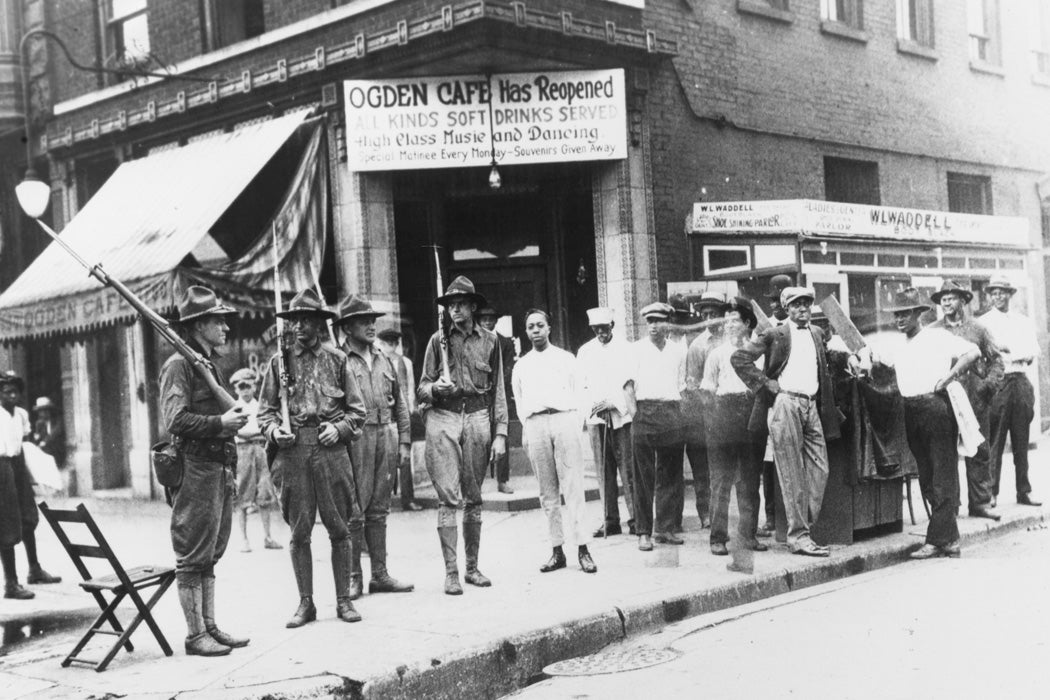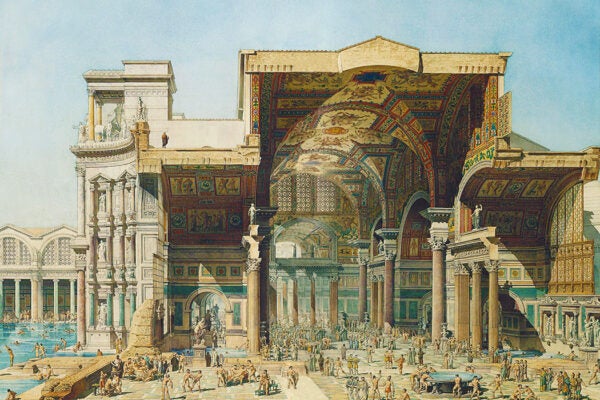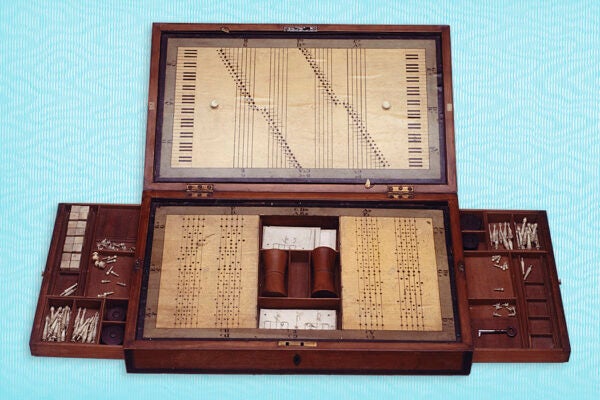The long “Red Summer of 1919” saw a brutal outburst of mob violence directed against African Americans across the country. James Weldon Johnson, field secretary of the NAACP, was the one to name it the “Red Summer.” This “red” was for blood. Among other horrors, there were race riots, ninety-seven lynchings, and a pogrom-like massacre of somewhere between 100 and 237 people in Elaine, Arkansas.
As historian David F. Krugler writes, one of the worst race riots shook Washington DC from July 19th to July 22nd, 1919. On the night of July 18th, a young white woman was attacked, and rumors quickly spread that two African American men were guilty. Her husband worked for the Navy, and soon a mob of white servicemen and veterans were descending upon a predominately African American neighborhood, attacking everyone they encountered. The Home Defense League, a civilian vigilance committee officially sanctioned by the war effort to enforce patriotism and “Americanism,” also joined in.
At the time, demobilized soldiers were allowed to wear their uniforms after leaving service. And in DC, this practice led to confusion about who was who in the white mobs roaming the streets: “Uncertain lines between soldier, citizen, and volunteer helped make Washington’s riot unique,” writes Krugler.
The attackers claimed they were protecting “white womanhood.” Krugler suggests they were also envious of DC’s vibrant Black middle class and enraged by the idea that there were African Americans employed by the federal government.
Another characteristic of Washington’s race riot was that this white vigilantism was excused if not actually encouraged by the city’s white-owned newspapers during the events. “Negro Fiend,” “Negro Thugs,” and “Negro Rioters” were typical headline and caption terms. Most notoriously, writes Krugler, the front page of the Washington Post of July 21st “all but ordered white servicemen to mobilize at Pennsylvania Avenue and 7th Street that night to carry out out further attacks on African Americans.”
Weekly Digest
There were multiple deaths and hundreds of injuries before the Secretary of War called in Army General William Haan to restore order. With no active duty Black soldiers serving on riot duty, Black Washingtonians were understandably worried about white troops sent to protect them. “Riot troops” meant something entirely different to them. Some fought back, contending both “with white mobs and hostile authorities,” including brutal treatment in police precinct jails.
There’s some irony in the General being tasked with quelling the violence, for it was the white servicemen, both recently demobilized and active duty soldiers, sailors, and marines, who had led the attacks against the Black population. While the riot was suppressed by July 22nd, the last of Haan’s troops wouldn’t be pulled out until the 31st. President Wilson, who had spent much of the year at the Paris peace talks, fretted that the riots would, in the words of the Washington Times, “make a detrimental impression in countries where heretofore America had been regarded as the foremost exponent of social equality and justice.”







